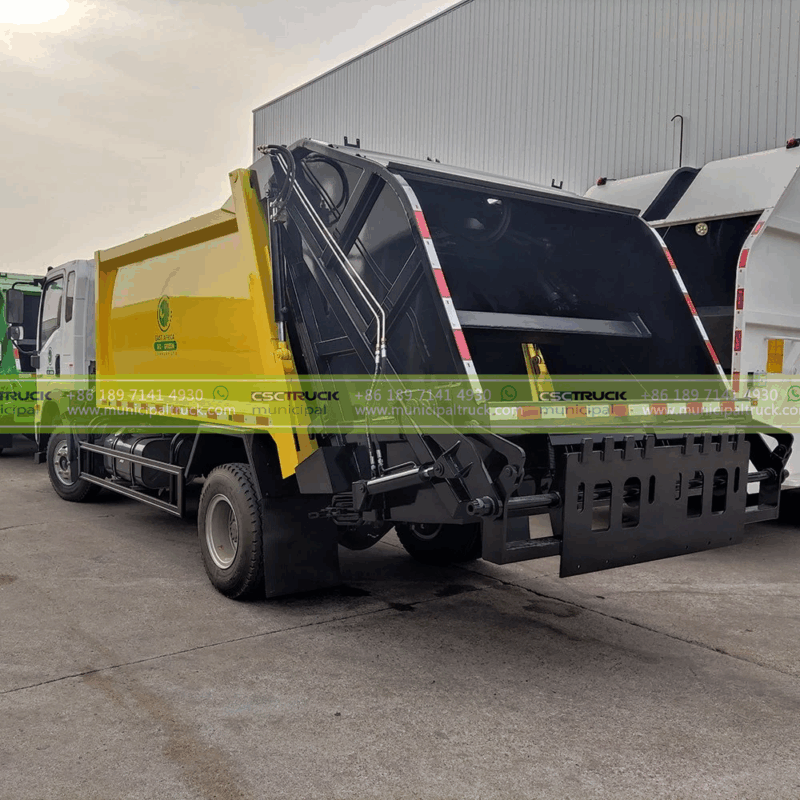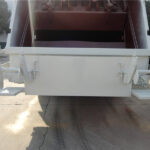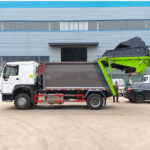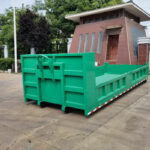Introduction: The Engineered Backbone of Modern Sanitation
Picture the unmistakable rumble down your street: a large truck pauses, workers swiftly load bags and bins, and a distinct crushing sound follows before it moves on. This ubiquitous scene relies on a marvel of municipal engineering – the compactor garbage truck. Far more complex than a simple hauler, this vehicle is a mobile waste processing plant, meticulously designed to maximize collection efficiency, minimize trips to disposal sites, and handle the sheer volume of modern refuse. Its effectiveness hinges on a symphony of specialized components working in concert, transforming loose debris into dense, transportable payloads. Understanding these essential parts reveals the sophisticated machinery silently keeping our communities clean and functional.
The Foundation and Control Center – Chassis, Cab, and Operator Interface
At its core, every compactor garbage truck begins with a rugged commercial truck chassis, specifically engineered for severe duty cycles. These chassis, often sourced from manufacturers like Kenworth, Peterbilt, or Mack, feature reinforced frames, heavy-duty suspensions (frequently air-ride for load stability and driver comfort), and powerful diesel engines generating the necessary torque for both propulsion and operating auxiliary systems. The power take-off (PTO) unit is a critical link, transferring engine power to the hydraulic pump that drives the entire compaction mechanism, allowing the truck to collect waste without needing a separate engine. Attached to this robust foundation is the operator’s cab, meticulously designed for functionality and safety during long, demanding shifts; it houses intuitive controls – often a combination of joysticks, switches, and touchscreens – allowing the driver or crew to precisely manage the loading cycle, compaction process, and dumping functions with minimal physical strain, while maintaining clear visibility of the work area and crew through enhanced mirrors and sometimes camera systems. This integration of heavy-duty mobility and sophisticated control forms the indispensable platform upon which the specialized waste-handling body operates.
The Waste Reception and Densification Hub – Hopper and Packing Mechanism
The heart of the compactor garbage truck lies in its unique ability to compress waste, a feat accomplished by two primary integrated components working sequentially:
- The Loading Hopper: Positioned typically behind the cab (or at the rear/side depending on configuration), the hopper serves as the initial reception point for refuse. Constructed from high-strength, abrasion-resistant steel, it features a large opening, often with a raked design, to facilitate easy dumping by collection crews or automated arms. Its interior surfaces are smooth to prevent material hang-ups, guiding waste towards the packing mechanism. Crucially, the hopper includes a heavy-duty hopper door, acting as a safety barrier during compaction and transport, preventing spillage and unauthorized access to dangerous moving parts inside the compaction body.
- The Packing Blade & Cylinder: This is where raw waste is transformed. Located at the rear of the hopper, a massive hydraulically powered packing blade (sometimes called a sweep or panel) is the active densification element. Driven by one or more large-diameter hydraulic cylinders, this blade executes a powerful, cyclical motion. It sweeps upwards and rearwards, gathering loose waste from the hopper floor, compressing it against the existing load within the main storage body, and then retracting to reset for the next cycle. The design of the blade’s path is engineered for maximum packing efficiency, progressively forcing air out and increasing waste density. The immense force generated by the hydraulic system allows this blade to crush bulky items and significantly increase payload capacity, directly translating into fewer trips to the landfill and lower operational costs – measured by the critical metric of compaction ratio (the volume of loose waste vs. compacted waste).
The Storage, Ejection, and Hydraulic Powerplant – Body, Tailgate, and Power Systems
The compacted waste needs secure containment and efficient unloading, enabled by the final set of critical components:
- The Main Storage Body: This large, box-like container, mounted directly behind the hopper, is the vessel for the densified waste load. Built from ultra-high-strength steel, its walls are engineered to withstand the enormous, continuous outward pressure exerted by the compacted refuse. Internal geometries are often tapered or designed with specific features to minimize friction and facilitate smooth ejection. The body’s capacity, combined with the efficiency of the packing mechanism, defines the truck’s operational range before requiring unloading. Specialized liners or coatings are frequently applied to combat corrosion and reduce material sticking.
- The Tailgate & Ejection System: For rear-loading compactor garbage truck models (a highly common configuration), the tailgate is a fundamental element. It serves multiple vital functions: it seals the rear of the body during compaction and transport, incorporates safety interlocks, and houses the ejector plate mechanism. At the disposal site, the tailgate hydraulically unlocks and swings upwards. Simultaneously, a powerful ejector plate, driven by dedicated large-bore hydraulic cylinders, moves steadily from the front towards the rear of the body, pushing the entire compacted load out smoothly and completely. This positive ejection ensures near-total payload removal, critical for operational efficiency and preventing residue buildup. The design and reliability of the tailgate seals are paramount to preventing leachate leaks during transport.
- The Hydraulic System: Providing the muscle for every moving part – packing blade, tailgate, ejector plate, and sometimes hopper door operation – is a high-capacity, high-pressure hydraulic system. This comprises a reservoir holding specialized fluid, a pump (driven by the PTO), a network of reinforced hoses and steel tubing, directional control valves managed from the cab, and the powerful hydraulic cylinders that perform the actual work. This system operates under extreme pressures, demanding robust components, meticulous maintenance (fluid/filter changes), and vigilant leak monitoring to ensure reliable, safe, and efficient performance throughout the truck’s demanding service life. System diagnostics are increasingly integrated into modern control interfaces.
Beyond Compaction: Contrasting Mechanisms in Waste Hauling
While the compactor garbage truck excels at maximizing payload through active densification for curbside collection, other specialized designs serve different needs. A rear garbage truck typically refers to a rear-loader with a compaction mechanism, as described above. However, a self tipping garbage truck represents a distinct approach. Often used for commercial roll-off containers or specific industrial applications, these trucks (like hook loaders or traditional roll-offs) focus primarily on transport and gravity-based unloading. They utilize hydraulics to lift and tilt the entire container bed or hook-lift mechanism, allowing the waste to slide out by its own weight. This method is efficient for large, non-compacted loads or materials unsuitable for crushing but doesn’t achieve the high-density payloads that define the compactor truck’s economic and environmental advantage in high-volume municipal collection. Each design, from the relentless compactor to the gravity-assisted tipper, addresses specific challenges within the complex ecosystem of waste management.







